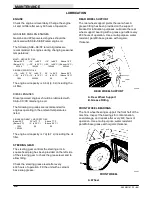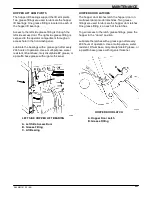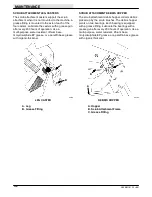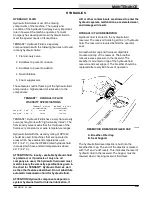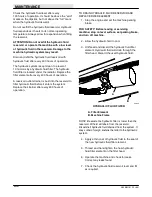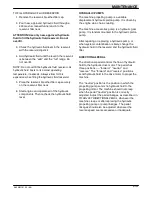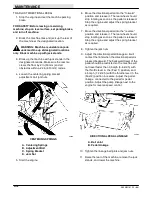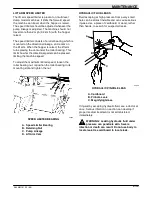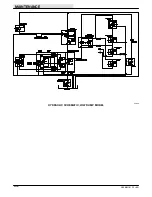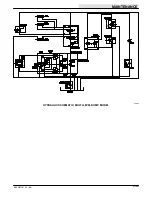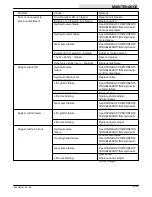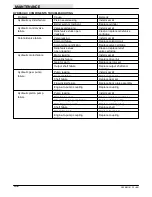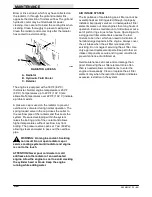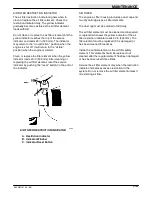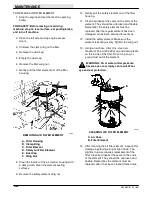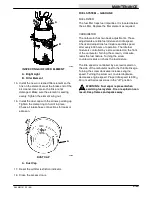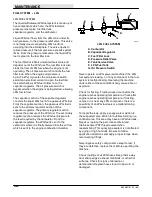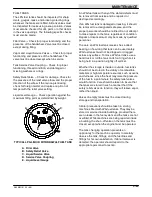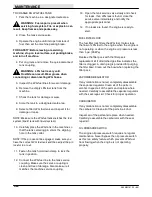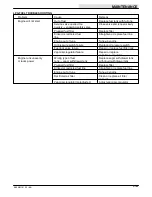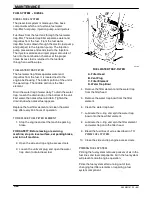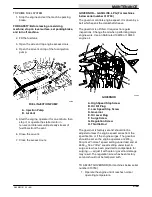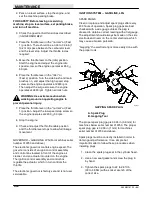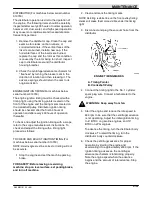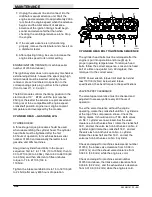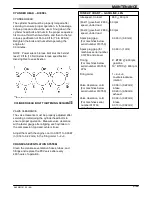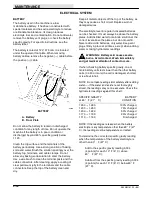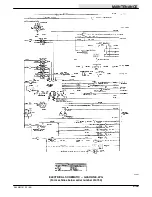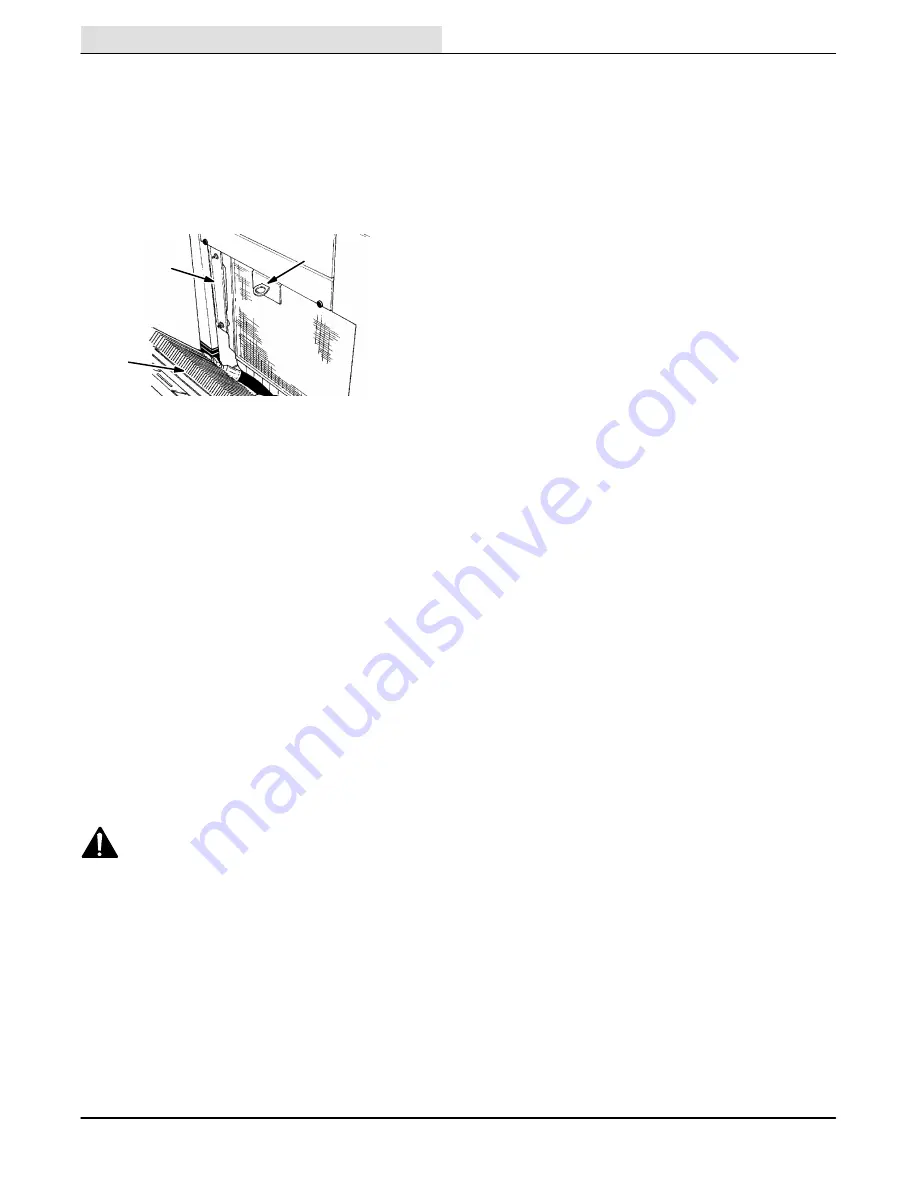
MAINTENANCE
285 MM191 (12---89)
3-20
Blow or rinse all dust, which may have collected on
the radiator, in through the grill and radiator fins,
opposite the direction of normal air flow. The grill and
hydraulic cooler may be tilted back for easier
cleaning. Use care not to bend the cooling fins when
cleaning. Clean thoroughly to prevent caking dust.
Clean the radiator and cooler only after the radiator
has cooled to avoid cracking.
A
B
C
02468
RADIATOR ACCESS
A. Radiator
B. Hydraulic Fluid Cooler
C. Retainer
The engine is equipped with a 180
_
F (82
_
C)
thermostat. Normal engine temperature is 200
_
F
(93
_
C). Temperatures up to 220
_
F (104
_
C) are
allowable. Temperatures over 220
_
F (104
_
C) indicate
a problem exists.
A pressure cap is used on the radiator to prevent
overflow loss of water during normal operation. The
spring-loaded valve in the cap closes the outlet to
the overflow pipe of the radiator and thus seals the
system. Pressure developing within the system
raises the boiling point of the coolant and allows
higher temperatures without overflow loss from
boiling. The pressure valve opens at 7 psi (50 kPa),
allowing steam and water to pass out the overflow
pipe.
WARNING: Hot engine coolant. Scalding
can result. Do not open radiator cap or
service cooling system until radiator and engine
is cool to the touch.
ATTENTION! Never pour cold water or cold
antifreeze into the radiator of an overheated
engine. Allow the engine to cool to avoid cracking
the cylinder head or block. Keep the engine
running while adding water.
AIR INTAKE SYSTEM
The importance of maintaining an air filter cannot be
overemphasized. Dirt ingested through improperly
installed, improperly serviced, or inadequate air filter
elements wears out more engines than long hours of
operation. Even a small amount of dirt will wear out a
set of piston rings in just a few hours. Operating with
a clogged air filter element also causes the fuel
mixture to be richer, which can lead to formation of
harmful sludge deposits in the engine. Always cover
the air intake when the air filter is removed for
servicing. Do not neglect servicing the air filter. Use
only approved replacement parts. Keep all other air
intake components secure and in good condition to
prevent entrance of unfiltered air.
Overmaintenance can cause more damage than
good. Removing the air filter element more often
than is needed allows contaminants to enter the
engine unnecessarily. Clean or replace the air filter
element only when the restriction indicator indicates
excessive restriction in the system.
Summary of Contents for 285
Page 1: ...r 285 Sweeper Scrubber ...
Page 6: ...ABOUT THIS MANUAL 285 MM191 12 89 d ...
Page 18: ...SPECIFICATIONS 285 MM191 12 89 1 2 ...
Page 22: ...SPECIFICATIONS 285 MM191 12 89 1 6 ...
Page 24: ...OPERATION 2 2 285 MM191 12 89 ...
Page 62: ...OPERATION 2 40 285 MM191 NIL ...
Page 76: ...MAINTENANCE 285 MM191 12 89 3 14 04644 HYDRAULIC SCHEMATIC LOW DUMP MODEL ...
Page 77: ...MAINTENANCE 3 15 285 MM191 12 89 04645 HYDRAULIC SCHEMATIC MULTI LEVEL DUMP MODEL ...
Page 103: ...MAINTENANCE 3 41 285 MM191 6 90 06187 ELECTRICAL SCHEMATIC AUTO SHAKER RFS ...
Page 104: ...MAINTENANCE 285 MM191 6 90 3 42 06187 ELECTRICAL SCHEMATIC AUTO SHAKER RFS ...
Page 134: ...APPENDIX 285 MM191 12 89 4 2 ...

